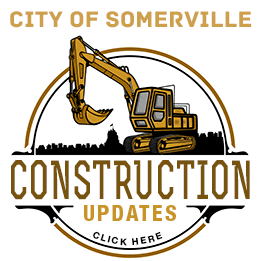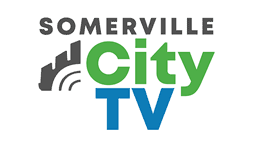(The opinions and views expressed in the commentaries and letters to the Editor of The Somerville Times belong solely to the authors and do not reflect the views or opinions of The Somerville Times, its staff or publishers)

By Will Mbah
Candidate for Somerville City Councilor at Large
willmbah.com
On July 1, 2023, Somerville and other cities in the Commonwealth have launched a new era of development and construction regulation. A new set of updated energy-efficiency regulations, called the Specialized Stretch Code, have taken effect. All buildings in the city that will be newly built or reconstructed will have to incorporate systems for heating, cooling and electric power supply, which conform to the best standards of efficiency and carbon-reduction.
What is the Specialized Stretch Code?
Like all municipalities in Massachusetts, Somerville has in the past regulated the design, materials and systems of sanitation, energy and mechanical equipment by applying the state Building Code. This Code is a technical document that has appropriately evolved to incorporate the improved products and methods that industry designers and engineers have made available in the marketplace. Originally the Building Code regulations were only to protect people from disease, fire and building collapse. But over the years the purposes have expanded to encompass air and water quality, energy efficiency and to minimize the impacts of climate change.
In 2009, the Massachusetts Building Code was amended to include standards for energy efficient building systems and design solutions in sections called the “Stretch Code.” These define the performance and design standards for such elements as high-efficiency heating and cooling equipment; power supply by electricity instead of natural gas or oil; and the use of solar panels, heat pumps, etc. They also describe ways to design windows with triple panes or tinting to reduce solar glare and heat and other methods of anticipating the effects of climate change.
In 2009, Massachusetts was the first state to write a Stretch Code. Cities and towns were then allowed to choose to apply these new rules to larger projects for new construction when applications for building permits and zoning approvals were presented by developers. The rules were written to apply only to new and large buildings because some of the technologies were still experimental and costly.
Somerville was one of the first cities to adopt the Stretch Code in 2011 and, subsequently, 298 other Massachusetts cities and towns also adopted the code.
Of course during 14 years, the construction industry and building designers have continued to bring forward better building products and systems and the state, cities and towns have set more ambitious goals to achieve net-zero emissions. The state has fixed the goal of 50% reduction of carbon emissions from all sources by 2030 and the Somerville Climate Forward Pan has pledged the goal of zero carbon emissions in 2050.
The best contemporary practical ways to achieve these goals for buildings have been included in the Specialized Stretch Code. It was drafted in 2022 by an expert committee of the Commonwealth Department of Energy Resources and, starting in January 2023, cities began to take the votes to adopt the new code to take effect on 1 July. Somerville again was among the first. The City Council voted on January 26 and the Mayor approved.
How will the new Specialized Stretch Code change development regulation in the city?
Compared with the older version from 2009, the new Stretch Code does three important things:
(1) It incorporates the improved technologies, systems and design solutions that have been made available in recent years.
(2) It expands the application of its standards to all building projects – covering not only large projects and new construction but also smaller buildings and the reconstruction or rehabilitations of older buildings.
(3) It requires designers and engineers to include in their buildings the ability to make more changes in future as the technologies continue to improve.
Essentially the updated Code recognizes that improved technologies have already brought down the costs of alternative energy systems and designs to justify their inclusion in all projects. Previously only projects over 100,000 ft2 of building space were included. Now any building over 1,000 ft2 will be covered.
In addition, because the technologies will continue to evolve, it should be cost-effective and technically possible in a few years to transform buildings to full net-zero energy use. For example, lab buildings today continue to include natural gas for many research and production methods; but lab equipment using electricity is being improved at a steady rate, so it should be possible in a few years for labs to phase out their gas for electricity. The labs recently built and under construction today will have in place their pathways to transition, as the Stretch Code has required.
Cambridge has just enacted a Building Energy Use Disclosure and Reduction ordinance that will aggressively move this transition along in its large group of older existing labs and office buildings. Somerville may want to adopt a similar approach in addition to the Stretch Code but, because our numbers of older lab and office buildings are small, the payoff may not justify setting up the necessary administrative process. Watching how the Cambridge ordinance works for a period of time should help us to decide.
How will citizens recognize the impacts of the Stretch Code?
The most likely changes that citizen will recognize will occur in the development reviews that go before the Planning Board and ZBA.
Currently in the absence of the code provisions, OSPCD and the Planning Board have been requiring developers of larger projects to include in their applications documentation about their buildings’ environmental and energy systems. In granting special permits, site plan approvals and ZBA variances, the planners and boards have imposed as conditions or mitigations many of the types of design and equipment standards that are now in the Stretch Code.
The Stretch Code now sets uniform procedures that all developers and owners, who apply for permits, will have to follow at the city Inspection Services Department. At the same time it becomes unnecessary and redundant for the OSPCD and the Planning Board and ZBA to require parallel or different documentation. Similarly, now that the Code provides in clear technical language what the standards and requirements must be, it will be unnecessary and inappropriate for the boards to make redundant or inconsistent findings, based only on their generalized authority to determine “consistency with city plans.”
The city’s Commission on Energy Use and Climate Change has been working with OSPCD and a consultant to determine what changes will need to be made in the Zoning Ordinance and in the procedures of development review to remove all the redundancies. It should result in simpler procedures and in much clearer plan approvals by the experts in ISD.















“Zero-emissions” is a joke. Electricity comes from a power plant, not the receptacle on the wall. This just moves the emissions from Somerville to Everett. It takes 20 years to build a new power plant, will the electrical grid support the higher demands placed upon it?